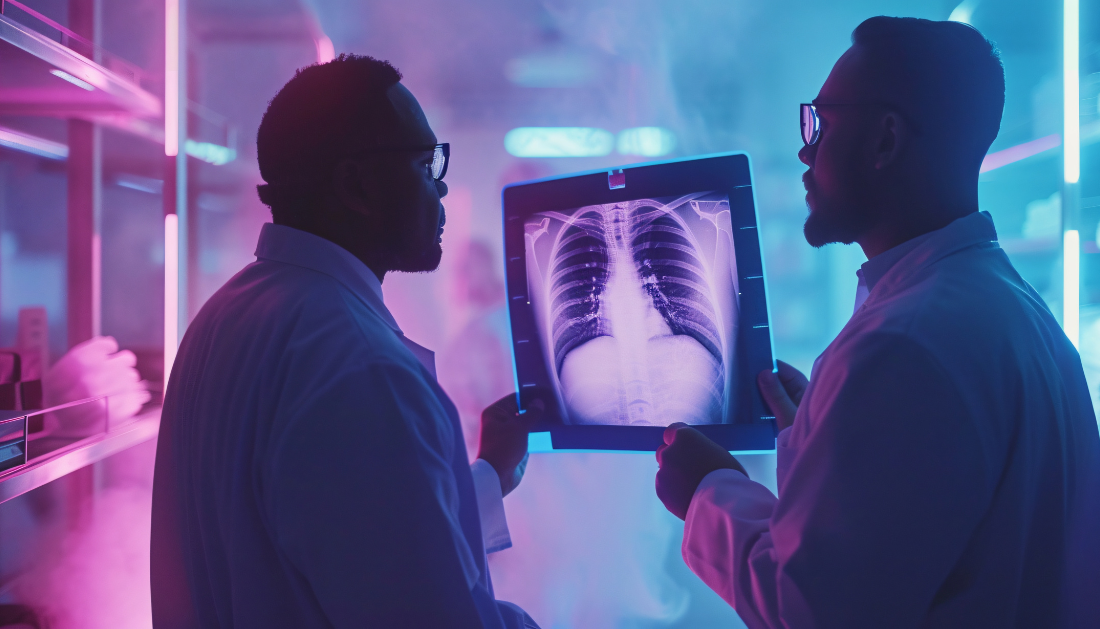

Together, scientists from the University of Duisburg-Essen (UDE) and Heinrich Heine University Düsseldorf (HHU) have identified and synthesized a class of chemicals that can function against the tuberculosis cause in a novel way. According to a research publication in the journal Cell Chemical Biology, the so-called callyaerins work against infectious diseases through a radically different mechanism than antibiotics that have been in use up to this point.
Mycobacterium tuberculosis, or M. tuberculosis, is the bacterium that causes the infectious disease tuberculosis. Every year, the illness affects around 10 million people globally. The World Health Organization (WHO) estimates that 1.6 million people lost their lives to tuberculosis in 2021 alone.This makes it one of the most important infectious illnesses, and it poses a major threat to the populace, especially in nations with underdeveloped healthcare systems.
Treatment becomes more challenging as M. tuberculosis has become resistant to numerous drugs over time. Few medications are now on the market that can effectively combat resistant strains. As a result, in order to create entirely new medications, researchers are looking for novel antibacterial chemicals and modes of action.
One such radically novel method employing callyaerins has been discovered by a research team led by Professor Dr. Rainer Kalscheuer of the Institute of Pharmaceutical Biology and Biotechnology at HHU and Professor Dr. Markus Kaiser of the Center of Medical Biotechnology at UDE. These naturally occurring materials with a marine origin are categorized as “cyclopeptides” chemically.
The natural compound found in marine sponges has been chemically synthesized so that its effects on tuberculosis bacteria in cell cultures may be investigated. Because of this, we are now able to create novel, highly effective compounds that are not found in nature. One of the two lead authors of the study, Dr. David Podlesainski of UDE, states that successful chemical synthesis is necessary before a prospective active agent can be employed as a medicine on a broad scale. The work was just published in Cell Chemical Biology.
The human phagocytes known as macrophages are the primary host of the tuberculosis bacterium, which goes on to grow within them. It has recently been found by the researchers that callyaerins can stop the bacteria from growing in human cells.
“The callyaerins attack a specific membrane protein of M. tuberculosis called Rv2113, which is not essential for the viability of the bacterium. This comprehensively disrupts the metabolism of the bacterium, hindering its growth. By contrast, human cells remain unaffected by the callyaerins.”- Emmanuel Tola Adeniyi, Doctoral Researcher, Co-Lead Author, Heinrich-Heine University Duesseldorf
Professor Kalscheuer, corresponding author of the study: “With the callyaerins, we have discovered a new mechanism of action. Unlike other antibiotics, these substances do not block vital metabolic pathways in the bacterial cell. Instead, they directly attack a non-essential membrane protein of the bacterium, which has not been considered as a potential target before.”
Professor Kaiser, the second corresponding author, focuses on a further perspective: “In further research work, we now need to clarify precisely how callyaerins interact with Rv2113 and how this interaction disrupts various cellular processes in such a way that M. tuberculosis can no longer grow. However, we have been able to show that non-essential proteins can also represent valuable target structures for the development of novel antibiotics.”
For more information: The anti-tubercular callyaerins target the Mycobacterium tuberculosis-specific non-essential membrane protein Rv2113, Cell Chemical Biology, doi.org/10.1016/j.chembiol.2024.06.002.
more recommended stories
 Phage Therapy Study Reveals RNA-Based Infection Control
Phage Therapy Study Reveals RNA-Based Infection ControlKey Takeaways (Quick Summary) Researchers uncovered.
 Safer Allogeneic Stem Cell Transplants with Treg Therapy
Safer Allogeneic Stem Cell Transplants with Treg TherapyA new preclinical study from the.
 AI in Emergency Medicine and Clinician Decision Accuracy
AI in Emergency Medicine and Clinician Decision AccuracyEmergency teams rely on rapid, accurate.
 Innovative AI Boosts Epilepsy Seizure Prediction by 44%
Innovative AI Boosts Epilepsy Seizure Prediction by 44%Transforming Seizure Prediction in Epilepsy Seizure.
 Hypnosis Boosts NIV Tolerance in Respiratory Failure
Hypnosis Boosts NIV Tolerance in Respiratory FailureA New Approach: Hypnosis Improves NIV.
 Bee-Sting Microneedle Patch for Painless Drug Delivery
Bee-Sting Microneedle Patch for Painless Drug DeliveryMicroneedle Patch: A Pain-Free Alternative for.
 AI Reshapes Anticoagulation in Atrial Fibrillation Care
AI Reshapes Anticoagulation in Atrial Fibrillation CareUnderstanding the Challenge of Atrial Fibrillation.
 Hemoglobin as Brain Antioxidant in Neurodegenerative Disease
Hemoglobin as Brain Antioxidant in Neurodegenerative DiseaseUncovering the Brain’s Own Defense Against.
 Global Data Resource for Progressive MS Research (Multiple Sclerosis)
Global Data Resource for Progressive MS Research (Multiple Sclerosis)The International Progressive MS Alliance has.
 AI Diabetes Risk Detection: Early T2D Prediction
AI Diabetes Risk Detection: Early T2D PredictionA new frontier in early diabetes.

Leave a Comment